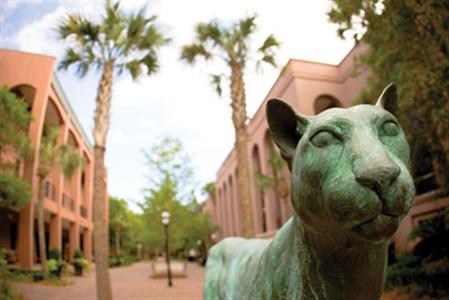Imagine strolling to class on a Monday morning and passing a gravestone on campus. At College of Charleston this is a norm for me every Monday, Wednesday, and Friday. If I am being honest, I had never noticed this gravestone until it was pointed out to me today. Former President, Andrew Jackson's, mother's tombstone is the one located here.
 |
| Elizabeth Hutchinson Jackson's Grave; Located in Cougar Mall |
Elizabeth Hutchinson Jackson is the name of the mother of our 7th president. Elizabeth died in Charleston in the Fall of 1781, when Andrew was only 14 years old. She became ill with ship's fever (cholera) after leaving her children and tending to soldiers in the Charleston area. But, the more interesting part of this story is how the gravestone got to where it is today.
After Elizabeth's death, she was buried in on a hill in a simple unmarked grave. Andrew Jackson attempted for years to find the location of her bones to bury next to his father but was unable to do so. It is believed her body is located somewhere in Lancaster, South Carolina.
In 1942, Elizabeth Jackson's gravestone was moved to Charleston on the corner of King Street and Heriot Street. After controversy about the gravestone having weeds obscure it and being in an unsanitary area, the president of the College of Charleston agreed to have the gravestone moved to the Cougar Mall where it has been placed since 1967.



















